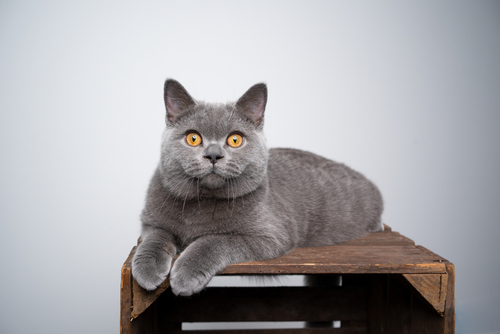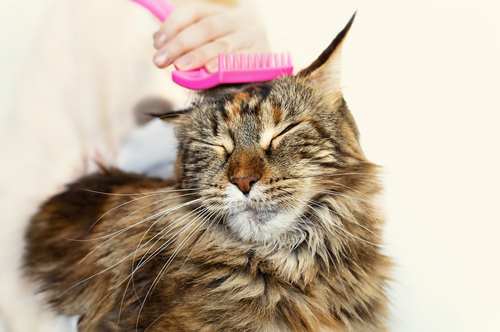
Grooming Service for British Shorthairs Cat Breed
July 21, 2021
Is It Bad To Not Groom Your Cat?
August 18, 2021Does Grooming Hurt Cats?

Does Grooming Hurt Cats? Whereas many individuals consider kittens as low-maintenance animals who only need a comb and trimming now and then, the reality is that the cat will benefit more from a monthly cleaning, combing, and washing routine. Nothing beats a little attention to make the cat happy and appear like the superstar that they are!
Many kitties clean themselves regularly, and you’ve undoubtedly witnessed their daily washes. However, as neat as kitties are in general, they occasionally require assistance to feel and appear their best. There are few things to consider before cat grooming. So, does grooming hurt cats? Continue reading on!
Make grooming cats a pleasurable experience

Cleaning the kitty should be enjoyable for both you and her. Cat grooming should be done whenever the kitty is already relaxed and sleeping, including after supper. You must be in a positive attitude since if you’re grouchy or anxious during the cleaning procedure, the kitty will pick up on it and get stressed.
The first few days you brush the cat, they may get frustrated with all the care. Keep the first few treatments brief, no more than 5 or 10 minutes. Once the kitty has been accustomed to the practice, progressively increase the time spent cleaning them.
You may also utilize this opportunity to acclimate the cat to handling. Rub everything from the head to their toes to keep them from being anxious if this occurs again!
You also don’t have to force the kitty to undergo grooming. Take a pause and start again tomorrow if the cat appears upset or worried. If you have to clean the cat, seek the help of a friend to make the process go more swiftly. If the cat behaves nicely during grooming, don’t be afraid to congratulate them or offer them rewards.
Cat grooming

Cats, specifically those with long fur, require regular combing to keep the fur appearing neat.
- Brushing removes dirt and knots while also dispersing essential oils across the fur, keeping the body and hair clean and preventing irritation.
- Short-haired kittens have to be cleaned once every week.
- Begin from the top and moving towards its tail, remove dead fur with a steel comb.
- Trim the dead fur with a brush in the same way.
- Keep an eye on the cat’s eyes, tummy, and neck at all times.
Long-haired kittens require a little extra attention and must be cleaned regularly.
- Begin with the legs and tummy of the kitty.
- Comb the hair up and down in the upward movement to loosen and entangle it.
- Finally, divide the pet’s tail along the middle, and then comb every side separately.
Is it necessary for you to groom your cat regularly?

Even while cats clean themselves, cats often require additional grooming assistance from their masters. The frequency with which you must assist each animal will differ. Long-haired or medium-haired kittens have higher grooming needs, increasing the shedding periods when kittens lose more fur. They should be groomed regularly, though short-haired kitties have to be groomed every week.
Benefits

Cat grooming has several major advantages:
- Prevents hairballs from forming, which can lead to gastrointestinal obstructions.
- Maintains healthy, lustrous hair.
- Allows you to look for insects, skin diseases, or wrinkles.
- Facilitates the elimination of waste, scratches, branches, leaves, and other detritus
- Helps to avoid the growth of hair mats.
Grooming supplies

Cat grooming supplies should be tailored to the cat’s hair type. A fine-toothed insect comb, mild soap, and grooming gloves will be enough to carefully extract excessive hair and search for lice on short-haired kittens.
A wide-toothed brush and larger brushes may be required for long-haired cats. If the cat appears to be unhappy, try using different equipment or brushing with a softer touch and less force.
Hairballs

Cats ingest unwanted hair when grooming. These stray strands can build up and create a huge knot within the cat’s stomach, resulting in a hairball. A hairball is pretty unusual for a kitty to vomit once or twice a week.
A huge clump of swallowed hair can obstruct a cat’s digestive tract, posing a life-threatening threat. Owners grooming a cat are crucial since it tends to decrease the quantity of loose fur eaten and the shape of hairballs. Consult your veterinarian about additional options for preventing hairballs than grooming.
Is over-grooming linked to stress?

Most over-grooming situations in kitties are triggered by a hair or discomfort issue. Many instances, however, are thought to have a tension factor, as per popular belief.
Cat grooming is a common behavior used by kitties to feel good in stressful conditions or whenever they are nervous. If grooming is done out of place and so often that it interferes with normal activities, it might become addictive. Anecdotal data suggests that some Oriental types are more susceptible to suffer from stress-related cat issues, such as pulling the hair.
What are the regions that a kitty grooms excessively?

Overgrooming may happen on any portion of the part. It depends on how far their tongue can reach. The stomach, legs, and across the shoulder are the most typical appearances. On the abdomen, the spots might sometimes appear symmetrical. It’s necessary to distinguish between over-grooming and true alopecia.
Shedding

Shedding is the natural way of getting rid of dead fur. Pet cats may shed their fur throughout the year. Grooming the cats regularly and cleaning the fur from the home should help to reduce the annoyance of shedding. If you detect bald spots in the cat’s hair or a considerable hair loss, the root reason can be a medical problem that needs to be checked by a vet.
Once every week, check your cat’s ears for grease, dirt, and inflammation to keep those delicate sonar sensors bright and attentive with your every action.
Does Grooming Hurt Cats? – Conclusion

Always select a kitty bath wipe that contains organic ingredients and is free of harmful chemicals. When using the wipes, do a patch test to prove your pet isn’t sensitive.
Hairballs are less likely to occur when the cat is groomed, and knots are avoided. Cat grooming also alerts you to parasites, sores, bumps, and skin concerns in the cat, allowing you to efficiently monitor and manage their health. Cats clean naturally by licking, but owners may help the kitty by adding to the grooming practice and keeping the coat in good shape.



